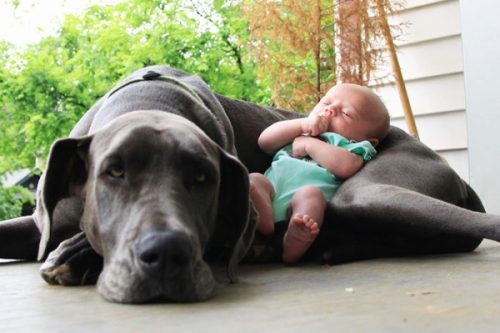Big Dogs and How to Train Them
With owning a big dog comes the great responsibility of properly and effectively training it. Take note of these important things to consider in successfully training giant breeds of dogs.

Valley Cottage, United States – December 16, 2016 /PressCable/ —
Giant breeds of dogs, despite being calm and friendly, are sadly stereotyped to be frightening. They are unfortunately often seen by the general population as scary and violent that would suddenly attack. These gentle giants are feared by some people because of their humongous size and louder and deeper barking. Even though big dogs may have an intimidating image, it is also crucial to keep in mind that these gentle giants are not always as aggressive as their large size may indicate. Despite their seemingly frightening size, big dogs are also kind-hearted pets great to have around families and children.
With owning a big dog comes the great responsibility of properly and effectively training it. This is particularly important because of the potential danger of an untrained giant dog weighing a lot of pounds. There are several important notes to consider in successfully training giant breeds of dogs.
Start early. Like with any dog breeds of different sizes, it is very important to start training dogs as early as possible – when they are still puppies and before they fully grow in size. It is fairly easier to discipline and teach obedience training at a young age, as compared to when the dogs are twice their puppy size. The sooner big dogs are properly trained, the easier it will be to control them when they grown into their fullest size.
Build a strong relationship foundation. A key to successful training is a strong relationship between the owner or the trainer and the big dog. Trust, respect, and confidence in each other is a great foundation to an effective dog training. Maintain eye contact and be firm in the commands to establish authority and to earn the dog’s respect. At the same time, make sure to balance the relationship with nurture, comfort, and friendship. Like any other dogs of different sizes, giant breeds of dogs also want affection. When the dog is confident in, and respects and trusts the trainer, there is a larger chance that it will obey
Walk them with the leash. It is an unfortunate truth that generally, large dogs are stereotyped and seen as threatening and scary. Thus, it is imperative to train big dogs to walk with the leash, and not pull and go crazy on the leash. This will pose less threats to other people when in public, while at the same time, bit by bit changing the negative stereotype of giant dog breeds.
Teach them simple commands. Another important thing to teach large dogs is how to properly socialize and greet people. While it might be adorable for tiny dogs to jump up and greet other people, a jumping big dog may scare or even hurt someone because of their size. In addition, it may be absolutely cute when giant breeds of dog are still a little puppy and they jump into your legs. However, when they grow bigger, taller, and heavier, it may not be as good anymore. In some instances, large dogs when overly excited can jump and easily push over a person. Before this habit of immediately jumping to greet people gets started, as much as possible, start teaching giant breeds of dog other more appropriate and safer greeting options while they are still little puppies. Reinforce a different behavior in greeting other people, such as shaking hands and sitting when people are at the door.
Positive training works better than punishing. Gentle giants are also sensitive, thus punishment, negative correction, or use of improper training tools may easily break them or even lead to more undesirable behaviors. More effective techniques of training include, using positive reinforcement – treats and praise – in successfully training big dogs.
Be consistent. It is crucial to set clear rules and strictly follow them. Consistency is important because dogs pay more attention to patterns.
There are also other techniques and methods in training big dogs. Some turn to the help of devices, such as bark collar for dogs. These bark collars are available in the market. Ourk9 specifically manufactures bark collars safe, effective, and most suitable large bark collars for big dogs.
(Giant breeds of dog are not always aggressive, violent, and vicious. But, because of their humongous size, such large dogs can cause accidents and unintentional injuries.)
For more information, please visit http://ourk9.com
Contact Info:
Name: Andy
Organization: Our K9
Address: 616 Corporate Way, Valley Cottage United States
Phone: 6463959636
Release ID: 154641